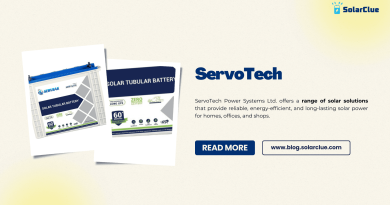Solar Power System for Group Houses
The emphasis on sustainable living is increasing and reducing our carbon footprint. So many homeowners are turning to solar power systems as an alternative energy source. A solar power system is not only environmentally friendly but also cost-effective in the long run. In this blog, we will discuss the benefits of installing a solar power system for group houses.
Table of Contents
What is a Solar Power System?
A solar power system is also known as a photovoltaic (PV) system. It harnesses the sun’s energy to generate electricity. It consists of solar panels, inverters, mounting structures, and a monitoring system. The solar panels collect sunlight and convert it into direct current (DC) electricity. This is then converted into alternating current (AC) electricity by the inverters. The electricity generated can be used to power appliances and lighting in your home.
Benefits of Installing
There are numerous benefits to installing a solar power system for group houses, including:
- Reduced electricity bills: By generating your own electricity, you can significantly reduce your reliance on the grid. This results in lower electricity bills.
- Environmentally friendly: Solar power is a clean and renewable source of energy that produces no greenhouse gas emissions, helping to reduce your carbon footprint.
- Increased property value: Homes equipped with solar power systems are more attractive to buyers and can command a higher resale value.
- Energy independence: With a solar power system, you are less reliant on the grid and can enjoy uninterrupted power supply even during blackouts.
How Does a Solar Power System Work for Group Houses?
When installing a solar power system for group houses, the first step is to assess your energy needs and determine the size of the system required. The solar panels are typically installed on the roof of the house, facing south to maximize sunlight exposure. The panels are connected to inverters, which convert the DC electricity into AC electricity that can be used to power your home. Any excess electricity generated can be stored in batteries for later use.
Factors to Consider Before Installing a Solar Power System
Before installing a solar power system for group houses, there are several factors to consider:
- Suitability of the roof: The roof of the house should have enough space and receive adequate sunlight throughout the day to maximize electricity generation.
- Local regulations: Check with your local authorities to ensure compliance with building codes and regulations for installing solar panels.
- Cost: While the initial cost of installing a solar power system may be high, the long-term savings on electricity bills make it a worthwhile investment.
- Maintenance: Solar power systems require regular maintenance to ensure optimal performance and longevity.
Conclusion
Installing a solar power system for group houses is a sustainable and cost-effective way to generate electricity for your home. By harnessing the sun’s energy, you can reduce your carbon footprint, lower your electricity bills, and enjoy energy independence. Before making the switch to solar power, consider factors such as roof suitability, local regulations, cost, and maintenance requirements. With proper planning and installation, a solar power system can benefit both the environment and your wallet in the long run.



